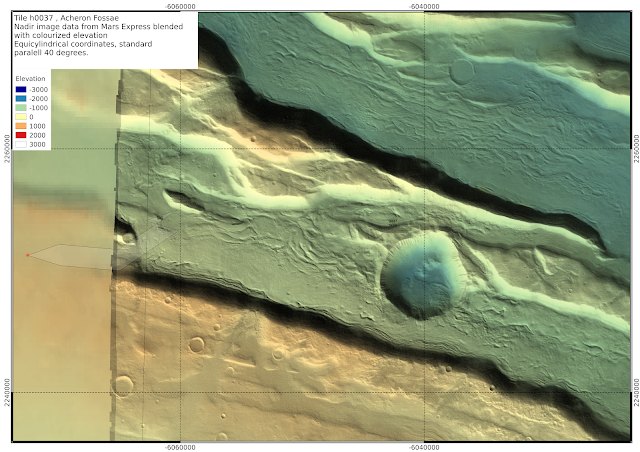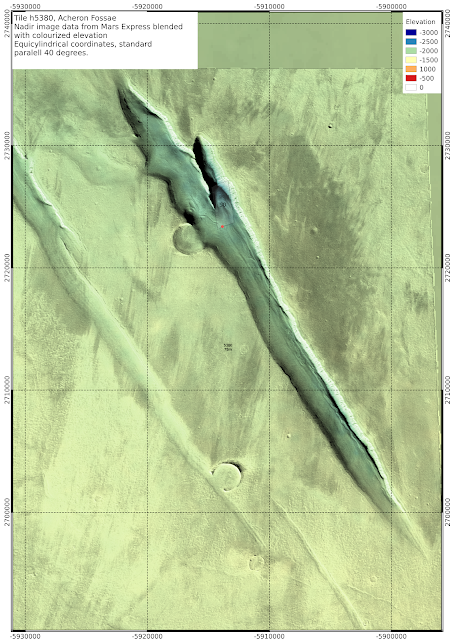Ottomma skrif a'n kynsa rann yn kevres a wrav vy gul rag Radyo An Gernewegva, a-dro dhe'n ebrenn y'n nos ha hwilans spas. An rekordyans o darlesys yn rann 229 o RAnG. Drog yw genev yth esa neb si yn keyndir an rekordyans, yth esa neb kaletter gans ow korrgowser dell dybav.
This is a transcript of the first part of a series I am doing for Radyo An Gernewegva about the night sky and space exploration. It was broadcast in episode 229 of RAnG.
Dydh da. Davydh Trethewey ov vy. My a vynn gul kevres nowydh yn Radyo an Gernewegva a wra dismygi dhywgh hwi pub mis a-dro dhe'n ebrenn nos. My a wra leverel pyth a yllowgh gweles yn ebrenn nos, ha nowodhow a-dhiworth an bys steronieth ha hwilans spas.
Yn mis-Gortheren an nosow yw berr. Yn Truru, dy' Kalann Gortheren, an howlsedhes yw 21:34, amser hav Predennek, ha'n howldrevel yw 05:14. Yma tri sort a mo (po twilight yn Sowsnek): mo sivil, mo morek, ha mo steroniethel. Yn dalleth mis-Gortheren, mo steroniethel a bes dres oll an nos, ha ny wra hi mos tewl yn ewn vyth oll. An nosow a hirha dres an mis, ha'n diweth an mis bydh an howldrevel 05:47 ha'n howlsedhes 21:06, hag y fydh tri our tewlder ewn ynter 23:45 ha 03:09. Mars os ta yn neb le arall yn-mes Kernow, hwi a yll kavos an termynyow ma diworth www.heavens-above.com
A-dhistowgh wosa an howl a sedh, hwi a yll gweles an planetys Gwener ha Yow y'n west. Yn gorthugher 30ves mis-Metheven, an dew blanetys a wra neshe y'n ebrenn, bys dhe tressa rann degre, le es braster gwelys an loor, kyn ny wrons i bos yn keth le yn spas.
 |
| Imaj: Gwiasva Astronomy Now |
Gwener yw an splanna anedha, mes nyns yw possybl gweles travyth warnedhi awos an kommol oll a-dro dhedhi. Yn pellweler, yth yw hi gwelys avel gwarak gwynn. Drefenn hi dhe mos ynter an howl ha'n norvys 15ves mis-Est, hi a wra brashe, mes an gwarak a danowha. An moyha splannder dhe Wener yw nos 12ves mis-Gortheren. Gwener yw an splanna taklenn yn ebrenn nos, marnas an loor.
Yow yw gorherys yn kommol ynwedh, mes yn pellweler y hyll bos gwelys grogysow kommol warnodho, tewedh bras (An Namm Rudh Meur), ha peswar a'y loryow. Yow a wra mos anweladow yn skon, drefenn ev dhe mos bys dhe du arall an howl ha ni, ha ny wra ev bos gwelys y'n ebrenn nos. Ev a wra henna 26ves mis-Est ha wosa henna dasomdhiswedhes y'n ebrenn bora. An planet Meurth yw tu arall dhe'n howl ynwedh hag anweladow lemmyn.
Sadorn yw gweladow isel yn soth yn ranneves Libra, wosa hi a dewlhe. An bysowyer Sadorn yw gweladow yn pellweler, hag ynwedh loor Titan ha nebes an huni byghanna.
Y fydh an loor leun dhe'n 2a mis-Gortheren, kwartron diwettha an 8ves mis-Gortheren, loor nowydh an 16ves mis-Gortheren ha kynsa kwartron an 24ves mis-Gortheren. Y fydh an loor leun arta dhe'n 31ves mis Gortheren.
Yth esa diskwedhyans Golowys an Kledhbarth an 22a mis-Metheven. Ny wrons i gweles yn fenowgh diworth le mar soth avel Kernow, mes nebonan diworth Lanndreth a's gwelas ha miroryon erell a'n Ruvaneth Unys. Mirewgh orth an wiasva www.flickr.com/groups/aurorawatch/ po sywyewgh @aurorawatchuk war Twitter dhe kavos gwarnyans diskwedhans aurora.
Yma meur a nowodhow dhe vri a-dro dhe hwilans spas y'n mis ma.
An efanvos Rosetta diworth Asienteth Spas Europ a wrug drehedhes an komet Churyumov-Gerasimenko yn mis-Du diwettha, mes y direll Philae a wrug aslamma ha tira yn maner nag esa lowr a wolow howl dhe nerthhe hy panelys howl. Y hwre an komet na neshe an howl yn misyow diwettha, ha krefter an howl a dheth ha bos lowr dhe dhifuna an direll ha'y dannvonn sinell bys dhe'n resegvell ha'n norvys. Dell hevel y hwra bos possybl dhe'n direll gul an ober godhonieth a vynnons an godhoniethoryon y wul.
 |
| Philae. kevrenn |
An efanvos “Gorwelyow Nowydh” (New Horizons) a wra neyja dres Pluton 14ves mis-Gortheren. An efanvos na o lonchys nans yw dewdhek blydhen, yn 2003, ha neyja dres planet Yow war y fordh dhe Bluton. Hag ev war y fordh, Pluton o dasklassys avel “planet korr” a-der “planet” wosa diskudhans taklennow erell yn grogys Kuiper kepar hag Eris hag erell. Ny wra an efanvos na mos yn resegva a-dro dhe Bluton, drefenn ev dhe neyja re uskis dhe hedhi. Kyn fia an dresneyjans termyn berr, y hwra iskargans an data pur lent, y hwra durya bys dhe martesen 18 mis wosa an dresneyjans dhe dhannvon an data dhe'n norvys, awos pellder meur dhe Bluton, ogas dhe 3 bilvil mildir. An negys "Goonhilly Earth Station Limited" a vynn usya an lestri radyo bras dhe Woonhelghya yn Kernow dhe geskommunya orth efanvosow ynterblanetek y'n termyn a dheu.
Godhonydhyon a wrug usya efanvos “Ekspress Gwener” (Venus Express) dhe diskudha yma loskvenydhow byw war Wener, dre weles nammow-poth yn is-rudh, hag y hwrussons i dyllo paper yn y gever seulabrys.
An efanvos Cassini re beu ow resegva a-dro dhe Sadorn wosa ev dh'y dhrehedhes yn 2003. Yma hwath imajys nowydh diworto a loryow Sadorn kepar ha Dione, loor a vraster kepar ha Pow Frynk, a wrug Cassini dresneyja 16ves mis-Metheven ha gweles kilnansow bras, ha Titan gans lynnow hidrokarbons warnodho.
 |
| Lynnow war enep Titan. kevrenn |
My a wayt bos an gewer da ha'n nosow kler y'n mis ow tos ha ni a yll gweles neppyth dhe les y'n ebrenn. Bys nessa prys.



















































